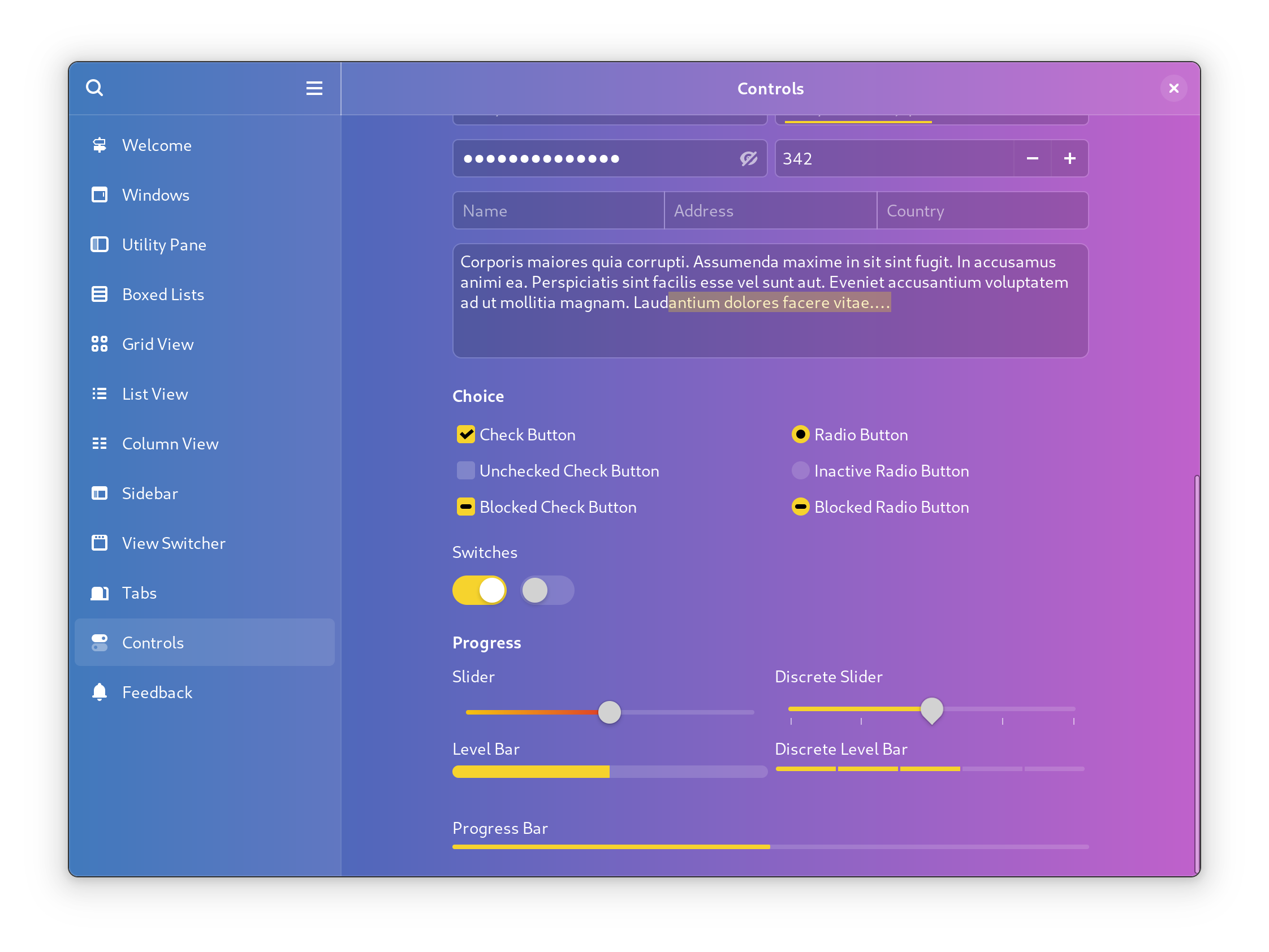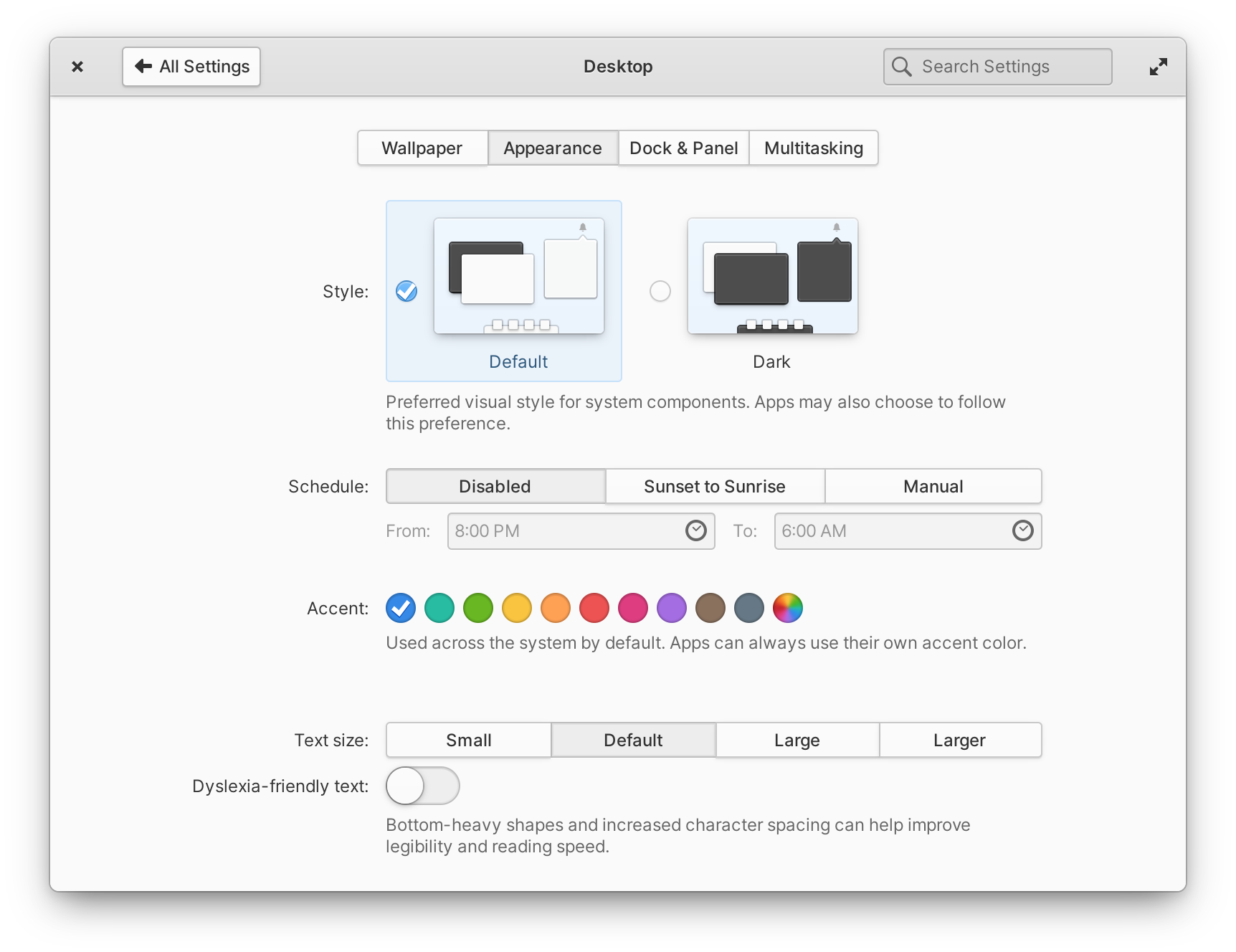Before we start, let’s get this out of the way because the week long delirium on social media has dragged enough.
Yes, libadwaita “hardcodes” Adwaita. Yes, applications, as is, will not be following a custom system theme. Yes this does improve the default behavior of application for GNOME when run on other platforms like Elementary OS. However, this is the result of a technical limitation, and not some evil plot as Twitter will keep telling you…
The reason is that in order for High Contrast (and the upcoming Dark Style) to work, libadwaita needs to override the theme name property so it doesn’t fallback to GTK’s “Default” High Contrast style. The “Default” style is an older version of Adwaita, not your system style.
Compared to GTK 3, there isn’t a new way to enforce the “hardcoded” style. The GTK_THEME Debug variable still works, as does ~/.config/gtk-4.0/gtk.css which you can use to set more permanent changes, and there are probably 3 other ways of doing this. The process to theme your system might be a bit different compared to GTK 3 but it will still work. Likewise, if you are developing a distribution, you have control of the end product and can do anything you want with the code. There is a plethora of options available. Apparently complaining on social media and bullying volunteers into submission was one such option…
And I guess this also needs to be stated: this change only affects apps that choose to use libadwaita and adopt the GNOME Design Guidelines, not “every” GTK 4 application.
As usual, the fact that the themes keep working doesn’t mean they are supported. The same issues about restyling applications when they don’t expect it apply and GNOME can not realistically support arbitrary stylesheets that none of the contributors develop against and test.
Now onto the actual blogpost.
There seems to be some confusion when it comes to libadwaita’s stylesheet and coloring APIs. It’s easy to mix them up when you haven’t heard of libadwaita before, so here is a short introduction on what they are and how they differ.
Keep in mind that the features discussed below are not guaranteed to land. After libadwaita 1.0 the stylesheet will be frozen and treated as an API. That means that if a feature doesn’t make it by 1.0 it will be a breaking change and will have to wait for libadwaita 2.0.
An Application Coloring API / Accent Colors
The idea here is that you can define “accent” colors to be applied for various parts of widgets. You can also recolor any part of a widget however you like. Take a look at Epiphany’s private mode header bar for an example. For this to be possible the whole stylesheet had to be reworked. Extra care was needed to ensure that the functionality wouldn’t conflict with the high contrast preference and wouldn’t need special handling. I hope Alexander will blog about this work in more detail, as it was truly fascinating. I am very excited to see what developers do with the coloring API.
For now the colors can be controlled with the GTK-specific @define-color, similar to CSS variables. Programmatic API will be added later on as the dust settles. The API will be based on AdwStyleManager which is getting introduced by the Dark style preference MR and hasn’t landed yet.
Here’s a quick example:
@define-color accent_color @yellow_5;
@define-color accent_bg_color @yellow_2;
@define-color accent_fg_color black;
.controls {
color: white;
background: linear-gradient(to right, shade(@blue_3, .8), @purple_2);
}
.slider > trough > highlight {
background: linear-gradient(to left, shade(@red_1, .8), @yellow_4);
}
.controls textview text {
background: none;
}
.controls entry,
.controls spinbutton,
.controls textview {
background-color: alpha(black, .15);
color: white;
}
.navigation-sidebar,
headerbar {
background: alpha(white, .1);
color: white;
}

For a more detailed example of what you can do check Federico’s recent blogpost.
System Accents
This is heavily inspired by system accent settings in elementary OS, and it’s similar in function. Think of it like a way to set the accent color system-wide, then applications can read it and decide to follow or override it. A case where you want to override would be if your app had a Sepia mode for example.
The coloring API mentioned above is designed in a way that makes this feature easy to implement. The interface and UI for this are not yet fleshed out completely, and it’s debatable if it’s going to be implemented/merged at all. There are a couple of design issues and concerns that need further research. It’s a possibility, but don’t bet on it.

Vendor Styling
The story behind this idea is extensive and best left for another post, so here’s the current status on this infamous topic.
There have been great accomplishments to reducing the possible fallout of restyling applications with brand colors. Nowadays vendors recognize that arbitrary restyling can be damaging to application developers and have taken some precautions.
Yaru reworked its style and rebased it on Adwaita, this helped reduced the changes to mostly the color palette and minor stylistic tweaks. This got rid of a lot of bugs surfacing in applications, as Yaru now at least has the same spacing, margins and padding as Adwaita. Pop!_OS followed suit shortly after, I believe it’s now based on Yaru.
However, both Ubuntu and Pop also introduced “Dark-modes”, Pop making it the default, which broke applications’ expectations. They did it despite being warned about it. As a result this ended up increasing the issues with theming by about an order of magnitude as now you would frequently end up with black on black, grey on grey and other fun coloring bugs. It should also be noted that neither Ubuntu nor System 76 approached any contributor I know of, about properly implementing a Dark Style preference upstream. Even though GNOME and Elementary contributors had been collaborating in public for the last 3 years.

Yaru developers did some research on the topic and there was a call for engagement by GNOME, but unfortunately ever since the last theming BoF in 2019, the conversation had dried up. The interested parties haven’t provided any details on what the scope of the API would need to be, how it would look like, or the detailed requirements. Nobody stepped up to help with the Adwaita changes that were required either, or with dark mode, or to work on the QA tooling, or to figure out the implementation details. Now we are sadly out of time for libadwaita 1.0 and there isn’t much hope for such a complex thing to be ready in the next 4 months.
Conclusion
For libadwaita 1.0 and GNOME 42 the work on recoloring widgets will likely be completed. A proper Dark Style setting will likely also be implement by then. System-wide accent colors are being discussed and looked at, but there are design related concerns about them, so it’s possible that they will never land. And there won’t be any “Theming API” for libadawaita 1.0. Maybe there will be renewed interest from the vendors that want it in the future, but given the story so far, I won’t hold my breath. I hope to be proven wrong.